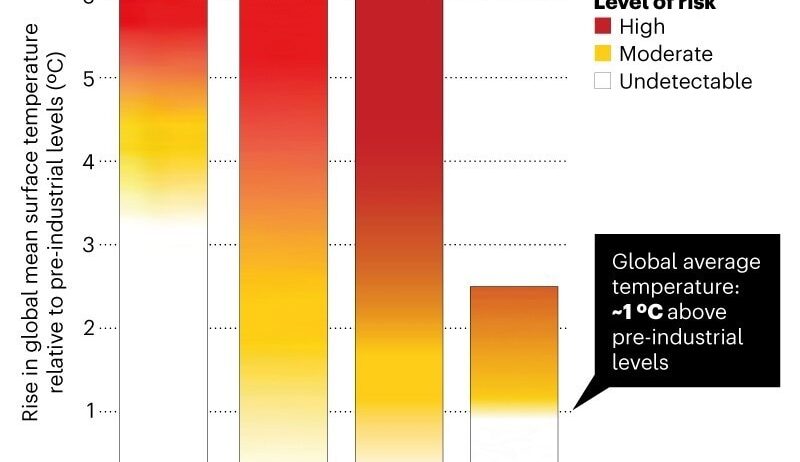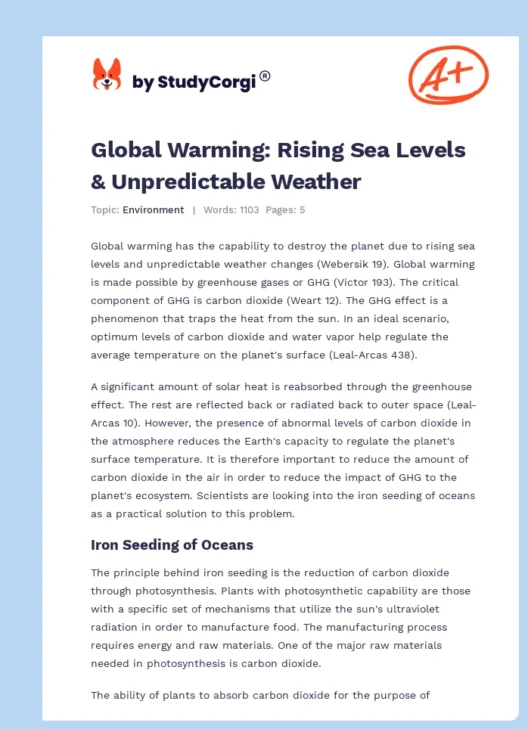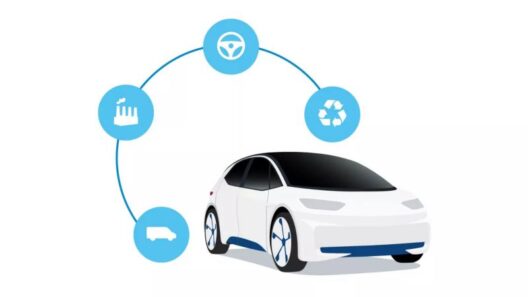The debate surrounding climate change is often framed in terms of immediacy—how fast the planet is warming, how many species are threatened, and what the imminent consequences will be for humanity. Yet, there exists a layer of complexity that elevates this discourse beyond mere statistics and projections. At the heart of climate change lies a concept known as “tipping points.” These are critical thresholds in the Earth’s climate system that, once crossed, may lead to irreparable changes. Understanding these tipping points is essential to our comprehension of the question: Is climate change irreversible?
Firstly, let us define what a tipping point is within the context of climate science. A tipping point refers to a critical threshold at which a small perturbation can lead to drastic changes in the state of a system. In simpler terms, it’s like pushing a boulder over the edge of a cliff—once it starts rolling, there is no stopping it. In climate terms, this might involve phenomena such as the melting of polar ice sheets, forest dieback, or the release of methane from thawing permafrost. Each of these events could trigger cascading effects, resulting in profound changes not just locally, but globally.
One prominent example of a potential climate tipping point is the Arctic sea ice melt. As temperatures rise, Arctic ice diminishes more rapidly than many climate models anticipated. This phenomenon has a dual effect: it reduces the Earth’s albedo (its ability to reflect sunlight), leading to further temperature increases, and it disrupts ecosystems that depend on ice formations for survival. Recent studies suggest that if current trends continue, the Arctic could be ice-free in the summer by the 2030s. This would be a significant tipping point not just for the region, but for global weather patterns, impacting agriculture, water supply, and the frequency of extreme weather events.
Another critical tipping point lies in the potential collapse of the Greenland and Antarctic ice sheets. The destabilization of these massive ice formations could lead to substantial and rapid sea-level rise, inundating coastal cities and altering coastlines worldwide. While estimates vary, some scenarios predict sea-level rises of several meters over the coming centuries if these ice sheets continue to melt at current rates. Such an event would reshape global geopolitics, forcing migrations and challenging political systems as entire populations are displaced.
Beyond these examples, the Amazon rainforest represents another gateway to irreversible change. The Amazon acts as a significant carbon sink, absorbing vast amounts of CO2 from the atmosphere. However, deforestation and climate change are pushing this critical ecosystem toward a tipping point. If the forest’s capacity to regenerate is compromised, it could transition into a savanna-like landscape, releasing stored carbon and exacerbating global warming. The ramifications of such a collapse would be catastrophic not only for the biodiversity of the region but also for the global climate system.
The peril of these tipping points lies not solely in their existence but in the interactions between them. Climate systems are complex and interdependent. The destabilization of one element can exacerbate the conditions of another, creating a vicious cycle that propels us further into crisis. For instance, the thawing of permafrost doesn’t just release methane—a potent greenhouse gas—but also affects plant growth, soil health, and water systems, further feeding into the climate feedback loop.
Yet, amidst the grim tableau painted by these tipping points, one must also engage with the realm of possibilities. While some changes may indeed be irreversible in the short term, humanity possesses the agency to influence other aspects of this crisis. The urgency for action is paramount, but so is the potential for innovation and resilience. Renewable energy technologies, reforestation initiatives, and sustainable agricultural practices can substantially mitigate the extent of climate change. The transition to a low-carbon economy offers pathways for countries to reduce emissions, stabilize atmospheric concentrations of greenhouse gases, and enhance biodiversity.
Furthermore, the interconnectedness of our global economy means that collective action can yield profound, systemic change. International agreements like the Paris Accord highlight a commitment toward limiting global warming to below 1.5°C. As nations converge around common goals, the power of collaborative spirit could very well be a bulwark against further environmental degradation. Communities worldwide are already taking strides to spearhead local strategies for sustainability, amplifying grassroots movements that can ripple across borders.
Nevertheless, we must ask ourselves critical questions: Are we willing to confront the urgency of climate change? Do we possess the political will to make the necessary sacrifices for the greater good? Ignoring these tipping points risks not only our ecosystems but the fabric of human society itself. The thresholds may appear daunting, yet they should ignite curiosity and compel action rather than despair. By grasping the significance of these tipping points, society can foster a shift in perspective, transitioning from passive observers of climate change to ardent agents of transformation.
With knowledge comes responsibility. The question of whether climate change is irreversible does not lend itself to a clear-cut answer. What is indisputable, however, is the necessity of vigilance and proactive engagement with our planet’s delicate systems. Understanding and addressing these tipping points is not merely an academic exercise; it is a call to arms—a beacon urging us to rethink our relationship with the Earth. Thus, the pursuit of answers about our climate destiny should spark curiosity and inspire collective action, for the future lies not only in the hands of scientists and policymakers but in each one of us.








